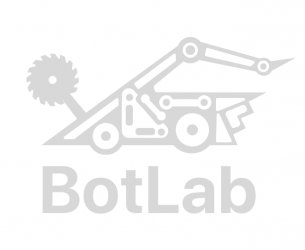Production:
We spent much of this week preparing for quarters walkarounds from the ETC faculty, integrating feedback, and iterating on our design. For walkarounds, each two/three faculty session was only 15 minutes, but we were able to introduce our topic, project goals, and get some valuable feedback on our AR prototype and the second major iteration of our design. We met with our client later on in the week to get his input on the new structure, which he was receptive of.
For the past two weeks, the team has shifted away from the physical SCRUM board to Trello to manage work and tasks accompanied by brief dailies and role specific meetings. I plan on adapting our backlog to our new design over the next week, and rescheduling the start of our first sprint for next Wednesday. My intention is that is that by maintaining the physical scrum board and simple burndown chart, the team will be able to easily visualize and interpret trends so that we can adjust our workflow for the next sprint cycle.
Design:
This week, we got a prototype out for testing our movement phase. The demo includes putting wheels on your bot and then placing it in physical space to drive it around. This demo was a sample of what our first idea would feel like in terms of switching between non-AR and AR part of our game. After trying it out with faculty during quarters, we got some really good feedback on our prototype. We were a little skeptical about driving a bot in AR because of the limitations of the IPad screen size but we found out that it didn’t feel all that uneasy and was actually pretty smooth to drive.
This week, we also started expanding on the battle part of our game to test our 2nd idea which has much more controlled gameplay. In Order to better scope, we have modified our idea in a way that we don’t have to actually teach kids how to build a bot from scratch. Based on the feedback we received during quarters, we have decided to divide the process into three parts with each part highlighting an aspect of bot building. The three aspects include Repair, Redesign and Strategy involved in bot building and battling.
A flowchart for the idea is as follows:
Based on our flowchart, we are going to expand each aspect and we are going to make the player experience a battle that will resemble a past championship battle.
Repair: Teaches the player about material replacement and durability.
Redesign: Includes presenting the player with a problem in the arena and providing a set of options amongst which the player will choose which one to pursue.
Strategy: Includes the strategy involved during an actual battle where none of the bots get defeated. Each bot will get points based on where they attack their opponent and a tally will decide who wins.
Programming:
This week we are making another prototype that combines two phases of our game: building and battling. For building part, we make tools in the non-ar environment. we move two wheels around and place them at the right place of both side. Once it’s done, we are able to drop the bots we were just created to the scene. Although it’s still a simple and rough version prototype but this at least give us the sense of the whole game flow.
One of the difficulties we encountered is the object that persist between two scenes. And since the object we created has rigid body, the unity physical system seems not stable at some points. We later fix the problem by adding constraint on two axis rotations. Though it’s not the perfect solution, we still have something that testable at last.
Art:
In this week, we changed our game design into a new one which will be focus more on Ar controlling and battle. In the new game flows, the players will choose a bot to battle and try to fix the broken parts of this bot during the battle. The players can learn how to place different components of a bot.
For the prototyping, we finished a rough whole bot with wheels and weapon for testing. In the prototype, we test controlling the bot in AR by using only one button to control the turning and moving forward. Next week, if the prototype works well and we will move forward for more 3D modeling as well as animations and texture.


